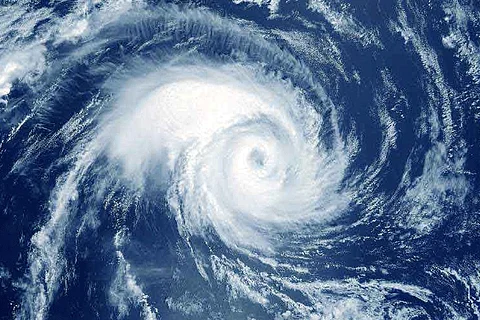

New Delhi | A deep depression that triggered torrential rains and floods in Gujarat on Friday intensified into cyclone Asna off the coast of Kachchh and the adjoining areas of Pakistan, the India Meteorological Department (IMD) said.
This is the first cyclonic storm in the Arabian Sea in August since 1976. The name Asna, given by Pakistan, means "the one to be acknowledged or praised".
Between 1891 and 2023, only three cyclonic storms formed in the Arabian Sea during August (in 1976, 1964, and 1944), according to the IMD.
The 1976 cyclone originated over Odisha, moved west-northwestward, entered the Arabian Sea, followed a looping track, and weakened over the northwest Arabian Sea near the Oman coast. The 1944 cyclone intensified after emerging into the Arabian Sea before weakening. In 1964, another short-lived cyclone developed near the South Gujarat coast and weakened near the coast.
The deep depression over Kachchh coast and adjoining areas of Pakistan and Northeast Arabian Sea moved westward with a speed of 6 kmph during the past 6 hours, intensified into cyclonic storm 'Asna' (pronounced as As-Na) and lay centered at 1130 hours over the same region, 190 km west-northwest of Bhuj (Gujarat),
It will continue moving nearly west-northwestwards over the northeast Arabian Sea, away from the Indian coast, over the next two days, the weather department said.
A deep depression is a low-pressure system with wind speeds ranging from 52 kmph to 61 kmph, while a cyclone has wind speeds between 63 kmph and 87 kmph.
A sea surface temperature of 27 degrees Celsius and above is needed for a low-pressure system to intensify into a cyclone.
Currently, the sea surface temperature in the Bay of Bengal is 28-30 degrees Celsius. It is around 27-28 degrees Celsius in the Arabian Sea.
It's colder (below 26 degrees Celsius) in the west-central Arabian Sea and very warm (above 32 degrees Celsius) in the Gulf of Aden. The Tropical Cyclone Heat Potential is high in the central Bay of Bengal but low in the northern and central Arabian Sea.
The IMD on Thursday said these sea conditions suggest that the system will encounter colder waters in the Arabian Sea, so it's unlikely to intensify much.
Madhavan Nair Rajeevan, former secretary of the Ministry of Earth Sciences, said it was surprising to see the weather system over the North Arabian sea intensifying into a cyclonic storm.
"During our training we learnt from our teachers and textbooks that the North Arabian sea becomes colder during the monsoon season due to ocean upwelling and no weather system can intensify over there," he posted on X.
"How does this happen? The Arabian sea is warming up as a part of global warming. But we need to understand the mechanisms better. It is high time we need to revise meteorology textbooks describing the dynamics of monsoon weather systems by incorporating this kind of new information and insights. We need to be better prepared for climate change adaptation strategies," he said.
Rain-related incidents in Gujarat have claimed 26 lives over the past three days. More than 18,000 people have been relocated, and around 1,200 rescued from flood-affected areas in the state.
In some cases, security forces used helicopters to evacuate people to safer locations, according to the State Emergency Operation Centre (SEOC).
Vadodara, the worst-hit city from the recent downpour, experienced some relief as the Vishwamitri river's water level dropped from 37 feet to 32 feet in the morning.
However, several low-lying areas remain flooded.
The river had crossed the danger mark of 25 feet on Tuesday morning following heavy rains and the release of water from Ajwa Dam.
